Sweet 16: The most popular lenses of 2017…so far
posted Friday, July 21, 2017 at 3:10 PM EST
What are the most popular lenses on our site in 2017 now that we're halfway through the year? We're glad you asked! We post the most popular cameras on our homepage… why not discuss the most popular lenses? When we took an initial look at the traffic stats, some in the Top 16 were obvious "ringers" and others were pleasant surprises, but this list is what you, the readers, have clicked on the most thus far in 2017.
Enjoy! And we hope you find something that stirs your creative juices.
Olympus 12-100mm f/4 IS Pro
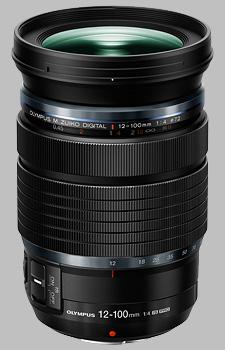
Without a doubt, the lens that hands-down gets the most interested clicks on Imaging Resource these days is this new release from Olympus. When mounted on a Micro Four Thirds camera, the lens offers a 24-200mm equivalent field of view, making it the perfect walkaround or travel lens. Most lenses in this category offer a variable aperture, meaning it offers a good, fast aperture at the wide end, but zooming in reduces the aperture to something much slower; the Olympus 12-100mm offers a constant f/4 aperture, all of which is in a relatively small and light package.
The lens offers incredibly sharp images, regardless of the aperture and focal length you select: We also saw very little difference in sharpness at the center compared to the corners. The 12-100mm is the second Zuiko Pro lens to offer built-in optical image stabilization. By itself, the 12-100mm offers a claimed 5-stops of stabilization, however, when paired with the E-M1 Mark II, this "Sync I.S." system is said to offer a whopping 6.5 stops of correction. Our testing bears this out: without image stabilization, we were getting sharp images at 1/125 of a second. With the system enabled, we could get consistently sharp hand-held images at speeds as low as a quarter of a second, or 5 stops of improvement.
The only thing that works against the Olympus 12-100mm Zuiko Pro is its price -- it might be out of the reach of most casual shooters, with an MSRP of $1,299. But for the ultimate walk-around, do-everything lens, we find the price well worth it if you can swing it!
Buy Now: B&H • Amazon • Adorama
Sigma 135mm f/1.8 "Art"
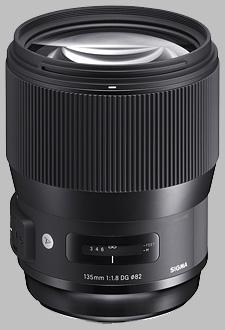
This is one of the sharpest, if not the sharpest, lens we've ever tested. Due to slight differences our lens tests across different sensor sizes, it's a bit tricky making the call for the absolute sharpest, but in any case, this one rivals the best we've ever seen. Even used wide open at f/1.8, on a full-frame body, the lens produced virtually no corner softness; it's tack-sharp all the time!
However, you don't get this kind of performance without some serious weight. For a prime lens, the Sigma is surprisingly heavy; heavier than both the Canon 135mm f/2 and the Nikon 135mm f/2 lenses. For the performance, it is unquestionably worth it. Sigma's release of the 135mm f/1.8 DG HSM "Art" is a timely and smartly-planned lens: the Canon and Nikon 135mm lenses are running a bit long in the tooth, released in 1996 and 1990, respectively.
The Sigma 135mm f/1.8 is not an inexpensive lens, with a MSRP of $1,399, but for what you get -- great build quality, outstanding sharpness, little to no chromatic aberration, and almost zero distortion -- the lens is worth every penny.
Buy Now: B&H • Amazon • Adorama
Olympus 12-40mm f/2.8 Pro
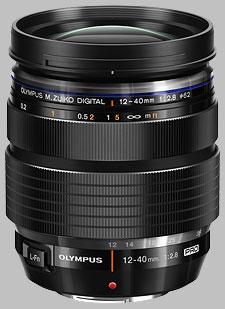
Olympus has been knocking them out of the park lately, The 12-40mm f/2.8 offers a similar field of view to a standard 24-70mm lens (the Olympus actually provides 24-80mm coverage) so it's not surprising to see Olympus providing lenses that professional photographers would be tempted by.
The lens provides excellent results for sharpness, resistance to chromatic aberration, corner shading, and showed very little distortion. Like the 12-100mm lens, the 12-40mm lens features an AF system that's super-quick and also quiet, so as not to introduce focusing noises in video recordings.
The lens isn't overly expensive for the excellent shooting experience it provides, with a MSRP of $899 ($799, at time of publishing). For professionals looking to move away from larger, heavier, full-frame cameras (and their larger, heavier accompanying lenses), Olympus has definitely created an ecosystem for professionals which can compete with the likes of Canon and Nikon.
Buy Now: B&H • Amazon • Adorama
Sony FE 100mm f/2.8 STF GM
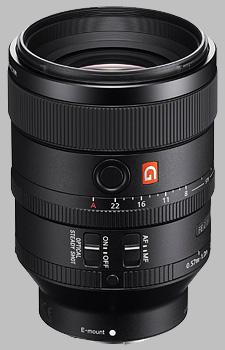
We tested a pre-production sample of this highly-anticipated lens from Sony back in February. A 100mm lens on its own isn't going to set the world on fire, but Sony has integrated a new technology, apodization, into this lens, and the results are intriguing, to say the least.
Apodization is a lens construction design intended to smooth out the background blur elements ("bokeh") thereby producing more pleasing portraits and other images where "super-smooth" bokeh is desired. The Sony FE 100mm clearly delivers in this respect - the bokeh in these images is definitely the most velvety-smooth we've ever seen. The most immediate cost of apodization is that the process by nature reduces the available light coming through the lens, when compared to the same aperture on a conventional lens - upwards of two stops of light loss. So, there is a tradeoff to be made.
Sony isn't the first to tackle how to handle out-of-focus areas in a lens (both Nikon and Canon have produced portrait lenses of this nature), but it's the latest and most modern effort in this category. It's not a cheap endeavour: the MSRP for the Sony FE 100mm is $1,498, but the results are definitely worth it.
Buy Now: B&H • Amazon • Adorama
Sigma 70-300mm f/4-5.6 DG Macro APO
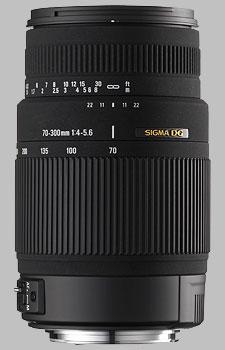
It's not surprising to see a Sigma 70-300mm on this list, as many photographers look for economical ways to extend their range. Sigma provides lenses in a variety of camera mounts (typically Canon, Nikon, Sony, and some even in Pentax mount) at prices which are generally less expensive than comparable lenses in that manufacturer's own lineup.
The 70-300mm Macro APO lens belongs to a category of lenses which aren't generally expensive to begin with, and Sigma's is definitely at the lowest end of the scale -- you can get this lens right now for around $200 -- and it works for both full-frame and APS-C cameras. When we tested this model back in 2008, it showed distinctly average results. To get the best from the lens in terms of sharpness, you need to stop down to at least f/8 when using the lens in its shortest or medium-range focal lengths. We found the best sharpness at around 70mm, between f/8-f/11. Zooming out to around 200mm, it shows pretty decent sharpness, but at the full 300mm, corner softness was pretty telling.
With enough light (ie., bright sunlight) you might find shooting situations that bring the best out of this lens, though unless you're not bothered by the quality of images produced by the lens, it's more likely you'll be wishing you invested that $200 into a better lens.
Buy Now: B&H • Amazon • Adorama
Olympus 300mm f/4.0 IS Pro

Olympus completed its siren call to professional photographers with the introduction of the 300mm f/4 Pro lens, offering a 600mm-equivalent field of view and a constant f/4 aperture. If you're a sports shooter or a wildlife photographer, getting physically closer to your subject isn't normally possible (or wise, in some cases), making superzoom lenses like this your main tool. In this case, Olympus leverages the inherent benefit of the Micro Four Thirds sensor -- specifically, its 2x "crop" factor -- allowing the manufacturer to offer a lens which punches well above its weight class.
In terms of performance, the Olympus 300mm f/4 is yet another example of amazing results. It's essentially as sharp as sharp gets, regardless of the aperture you select, meaning you basically set the aperture to whatever the situation demands and don't worry about sharpness. There's essentially zero chromatic aberration, corner shading isn't a factor, and while there is a hint of pincushion distortion in the corners, it's nothing to write home about.
If you're a Canon shooter looking for the same shooting experience, your option is the $11,500 EF 600mm f/4L IS II USM, which weighs in at over eight pounds and is almost eighteen inches long. The Olympus 300mm f/4 has a MSRP of $2,499, weighs almost three pounds and is only 9 inches long. Both your back and your wallet may thank you for considering this purchase.
Buy Now: B&H • Amazon • Adorama
Tamron 70-300mm DI VC USD
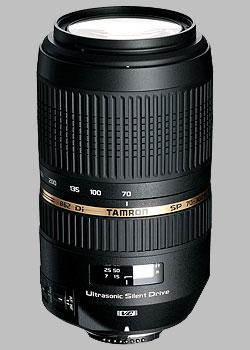
Like the Sigma 70-300mm, it's not surprising to see the Tamron 70-300mm on this list. Tamron provides lenses Canon and Nikon lens mounts, and often in the Sony lens mount, at competitive prices compared to similar lenses from the camera manufacturer.
The Tamron 70-300mm lens isn't a whole lot cheaper than those offered by Canon or Nikon, perhaps $50 less, depending on the model. In our testing of the lens we found that it offered fairly good results, but like other consumer-level lenses, you need to stop down to at least f/8 when using the lens in its wide-angle or medium-range focal lengths. The lens performs better at the 200mm and 300mm settings compared to the Sigma, and, it also offers VC (Vibration Control) to allow for greater stability when using the lens hand-held.
Buy Now: B&H • Amazon • Adorama
Sony 16-70mm f/4 Zeiss OSS
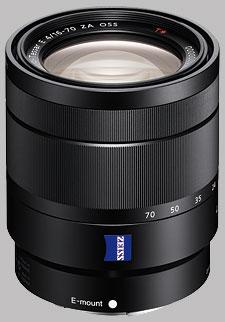
Sony shooters typically pay a bit more for their lenses when compared to other camera manufacturers, but the results are sometimes worth the premium. In this case, the Sony 16-70mm f/4 Zeiss is a very good but not excellent lens, with light corner softness at all apertures and focal lengths, and some detectable chromatic aberration.
As an upgrade to the 18-55mm kit lens sold with most Sony cameras, the 16-70mm f/4 is an excellent lens to consider -- it has image stabilization in the form of Sony's proprietary OSS (Optical SteadyShot) technology, a constant f/4 aperture, and a focal length range that's a little wider and longer than the kit lens. The price tag might make some photographers pause: at $900, it might be enough to have some think twice or consider other options.
Buy Now: B&H • Amazon • Adorama
Panasonic 14-140mm f/3.5-5.6 POWER OIS

The allure of the all-in-one lens is obvious -- you never have to change lenses, and you'll always have a lens on your camera that can handle pretty much any situation. The Panasonic 14-140mm offers an equivalent field-of-view of 28-280mm. All-in-one lenses are an exercise in compromise: they do a lot of things, covering a wide-angle to telephoto range, but they don't do anything especially well.
The Panasonic 14-140mm lens offers very good performance in terms of sharpness, resistance to chromatic aberration, corner shading and distortion; the lens is best-suited to outdoor scenarios as optimum performance is obtained by stopping down to f/8. So for indoor use, you might actually want to consider swapping out for a faster lens, as the 14-140mm doesn't perform quite as well in lower-light conditions.
If you're not as concerned about image quality, and don't want to bother with changing lenses, the Panasonic 14-140mm is a steal at $550, and might be the last lens you need to buy.
Buy Now: B&H • Amazon • Adorama
Sigma 24-70mm f/2.8 “Art”
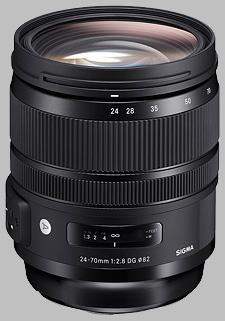
A very recent announcement for Sigma, no one knows how this lens performs yet, but given the track record of Sigma's "Art" lenses -- in other words, excellent -- it is clearly positioned to put another shot across the bow of Nikon and Canon alike. Price is a major factor: the Nikon 24-70mm f/2.8 VR costs almost $2,400, the Canon 24-70mm f/2.8L USM costs $1,750, while the Sigma's pricing will be a scant $1,299.
The lens will offer OS (Optical Stabilization); if you want stabilization in the Canon lineup, you have to opt for the 24-70mm f/4L IS USM. We'll be looking forward to seeing the lens in our test lab soon, as the lens is scheduled to be released shortly.
Buy Now: B&H • Amazon • Adorama
Nikon 18-140mm f/3.5-5.6G VR

The Nikon 18-140mm was first released in 2013 as a kit lens to pair with the D5200, an overhaul of the previous 18-135mm. It's a relatively inexpensive upgrade if you bought your Nikon with the 18-55mm kit lens, offering a much greater reach for only around $500.
Kit lenses usually carry the proviso of, "if you're not overly concerned about image quality, consider this lens." But in this case, the 18-140mm offers decent results for sharpness even when used at its widest aperture settings; the corners are generally soft, but stopped down, the sharpness is very good indeed. Chromatic aberration is noticeable, and lens distortion is quite apparent, but you really can't get everything for only $500.
Add to this an impressive four stops of hand-held stabilization when using VR, and you have an excellent all-in-one lens.
Buy Now: B&H • Amazon • Adorama
Fujinon XF 18-135mm f/3.5-5.6 OIS WR
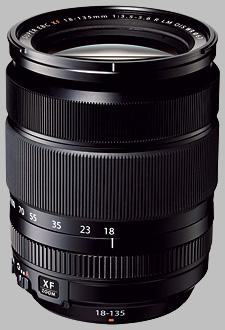
The search for a good all-in-one lens cuts across all brand loyalties, and the Fujinon XF 18-135mm is the example in the Fuji brand, offering a 28-200mm equivalent lens in 35mm film terms. The Fuji X-mount lens system produces some excellent lenses, and while the 18-135mm is very good, it's not quite as good as the other lenses in Fuji's stable: this is the price you pay for trying to get everything you want in one lens.
Optically, the lens offers decent results for sharpness, though even stopping down doesn't provide tack-sharp results you might expect from some of Fuji's excellent prime lenses. Chromatic aberration is nicely controlled, and there's little to no distortion or corner shading. The lens is solidly built, and features weather sealing in over 20 areas on the lens. Image stabilization is also a feature of the lens: while we didn't see much improvement in the wide angle, we found 3 ½ stops of hand-held stabilization when using the lens at the 135mm setting.
With its large stock of prime lenses and rangefinder-like experience, the Fuji X-mount series of camera seems to attract photographers who don't mind changing lenses. However if this isn't your thing, and you'd like to stick a lens on the camera and forget about it, then you won't go wrong with the Fujinon XF 18-135mm.
Buy Now: B&H • Amazon • Adorama
Panasonic 100-400mm f/4-6.3 LEICA DG VARIO-ELMAR
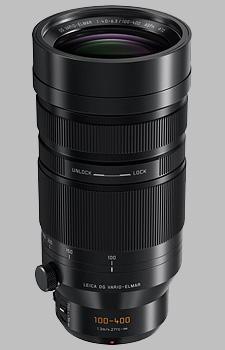
When you own a Micro Four Thirds camera and start thinking about lenses, one of the things you quickly appreciate is that the camera's sensor offers a 2x "crop factor" -- essentially doubling the effective focal length of your lens. So when you think about telephoto lenses, you are actually getting lenses that offer twice the rated distance.
This is the case when you consider the Panasonic 100-400mm lens, a lens that offers a 200-800mm-equivalent shooting range that weighs only two pounds. Granted, the minimum aperture at the 800mm focal length is f/6.3, but still, in any other manufacturer's lens mount, a lens that offers an 800mm shooting experience will easily cost over $12,000, compared to the Panasonic's $1,800.
The lens offers excellent performance at 100mm, and slightly less sharp images as the lens is zoomed in towards 400mm. Chromatic aberration, corner shading and distortion are also well-controlled by the lens (and post processing in-camera). The lens also offers OIS (optical image stabilization), with around 3-4 stops of hand-holding stabilization.
Buy Now: B&H • Amazon • Adorama
Nikon 24-120mm f/4G VR
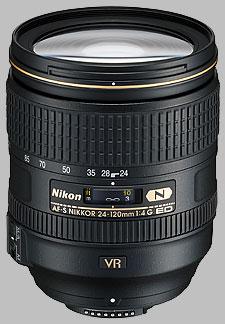
The search for a good all-in-one continues as evidenced by the popularity of this lens, nicknamed "the streetsweeper" by Nikonians. The 24-120mm offers the focal length of just about every prime lens, and in this version, a constant f/4 aperture -- with image stabilization to boot. For a do-everything lens, it's not bad, but like most all-in-one designs to get any kind of sharpness out of it you have to stop it down significantly, in this case, to at least f/5.6, if not smaller.
The lens offers VR ("Vibration Reduction") image stabilization which, in our testing, produced between 3 and 4 stops of hand-holding improvement. At just over $1,000 it's not an insignificant investment, but for the same or greater value it might be worth also considering either of the Sigma 24-70mm or Sigma 24-105mm "Art" lenses.
Buy Now: B&H • Amazon • Adorama
Canon EF-S 10-18mm f/4.5-5.6 IS STM
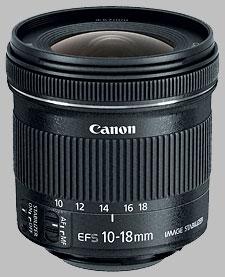
Canon is the market leader in sales, so it's not surprising that they also offer the most options for lenses. Ultra-wide-angle lenses are niche optics, so it's surprising that Canon now offers not one but two lenses in this category. The Canon EF-S 10-18mm was released in 2014 as a companion to the slightly more capable but definitely more expensive Canon EF-S 10-22mm. At $280, the 10-18mm became one of the most tempting new optics for the year.
Optically, the lens is no slouch. The lens is sharp regardless of the focal length and aperture, and is very resistant to chromatic aberration. There is some significant corner shading and distortion, but that's not really surprising for a lens that has almost a field of view of around 108 degrees.
Rather unexpectedly for an ultra-wide-angle lens, Canon added optical stabilization to the lens, as well as an STM focusing motor for super-quiet autofocusing. These two technologies are excellent for use in making movies, offering cinematographers an excellent addition to their bag of tools for producing unique shots.
Buy Now: B&H • Amazon • Adorama
Canon EF-S 18-135mm f/3.5-5.6 IS STM

Rounding out our list is another all-in-one style lens from Canon. No doubt searched for by Canon shooters looking to upgrade their kit lens, the 18-135mm offers much more telephoto reach than the 18-55mm lens.
We were reasonably impressed by the 18-135mm lens, noting very good performance for sharpness that is improved significantly by stopping down. Some chromatic aberration is noticeable, especially in areas of high contrast in the corners, and distortion will always be an issue for this style of lens. Results with the IS Image Stabilization system were very good, with the lens offering 2-3 stops of hand-held improvement.
Essentially, if you are shooting with an older 18-55mm lens that doesn't have IS or STM, and are looking to upgrade, it's a no-brainer - image quality will be the same or better, but you'll get greater telephoto reach as well as the stabilization and STM focusing motor.
*Note: This version has been discontinued. Click here to read about the newest model, the EF-S 18-135mm f/3.5-5.6 IS USM, or visit the purchase links below:
Buy Now: B&H • Amazon • Adorama
Conclusion
That wraps it up for our look at the most popular lenses for the first half of 2017! It's been an exciting six months for lenses, with some very interesting ones announced or released this year. We look forward to providing you some new reviews of those in the near future!